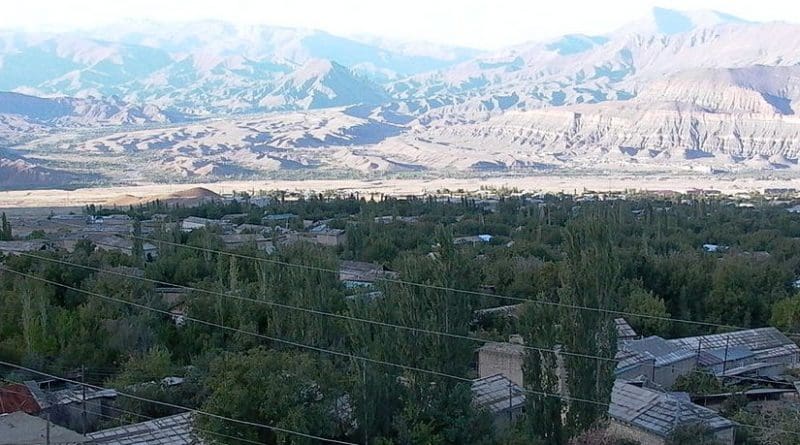City Of Naringala: The Parthenon Of Nakhchivan – OpEd
By Peter Tase
Rare geological formations, ancient monuments and religious architecture are the cornerstone of life and culture in the Autonomous Republic of Nakhchivan, Azerbaijan’s westernmost region shaped by natural beauty and deeply rooted patriotism.
To the north of the Sadarak village is found the Azhdahan cave, an archeological monument on a rocky place, in the majestic region of Sadarak. The length of the cave reaches approximately 12 meters, its width is 3-3.5 meters and height is 2-2.5 meters. Earlier, a cannon ball had fallen on the entrance of the cave and destroyed its ceiling and causing a closure of its entrance door. Its ceiling has turned into black from the fire smoke. The frontal sector of the cave looks like a little square. During archaeological investigations ceramic materials from the early Middle Ages were discovered at the cave entrance. Investigations show that Azhdahan had been used as a settlement in ancient times for a significant period, while reinforcing again that in this part of Nakhchivan has existed an old cultural tradition. This settlement belongs to a local civilization that goes back in the III-VI centuries.
In Shahbuz region, nearby the Gonaggormaz Summer Pasture is located the natural monument of Galin Gaya, meaning “the rock of bride”. This natural rock has the shape of a human face and this is the reason why it is called “Galin Gaya.”
According to the local legend it is a stone monument of a woman trying to defend her charm from the enemies. This magnificent monument reflects the cultural belief of the Azerbaijani people who are connected with a stone being able to twirl, go around. The date of this legend goes back to the III-II millennium B.C.
In the Sharur Region there is a closely knitted natural monument in the surroundings of Tamashali settlement, in the north of Havush village. Such a breathtaking natural monument consists of high precipitous rocks looking up towards the sky. According to the local population this monument has different stories, due to the fact that it is located nearby the border with Armenia and scholarly investigations have not been conducted appropriately. This monument dates back in the VII-VIII centuries. Nearby there are located settlements and cemeteries which date back in the Classical and Middle Ages.
Standing tall in the villages of Pazmari and Unus, region of Ordubad, is located Galin Gaya, a natural monument on the very top of a mountain which looks like a human figure. The people of Azerbaijan who historically have made mountains’ rocks legendary, have also regarded this monument as a mythological site where is reflected the culture of Azerbaijan.
The city of Naringala is settled on a mountain that is considered to be flat, 70-80 meters higher if compared to the mountains around in the West while excluding the Northeastern side. The other sides of the mountain are a precipitous cliff. The width in some places reaches three hundred meters. Only the territory of Naringala is about 300 acres, constructed according to a similar plan implemented in the construction of acropolis by the Greeks. In the central part of Naringala there was a complex that consisted of many small rooms in which the fortress garrison was located; a significant number of large rooms were destined for the city government and army leaders. This was the equivalent of the Parthenon in ancient Greece.
These structures were built with selected and limestones and two covered water basins. One of the water basins was constructed in a shape of triangle in which two of the three sides are of equal length and the second basin had a square shape. The only entrance to Naringala is through the first and second streets that are approaching to the fortress. The city of Naringala and its streets are surrounded with strong defense walls and hexagonal and round shape towers are found in the perimeter of the fortress.
Meanwhile a bath house and public buildings were located in the center. While the northern part of the city consisted of precipitous cliffs and that made it unnecessary to build defense walls on that side. Such a small fortress and guard stations located throughout the perimeter played an important role in the defense of the city. Today, such an important part of human history that has taken shape in Naringala – Nakhchivan – deserves a greater attention from international experts who continue to shed more light – through their research – in the historic periods of late antiquity and early medieval centuries of Nakhchivan and the Caspian region.

